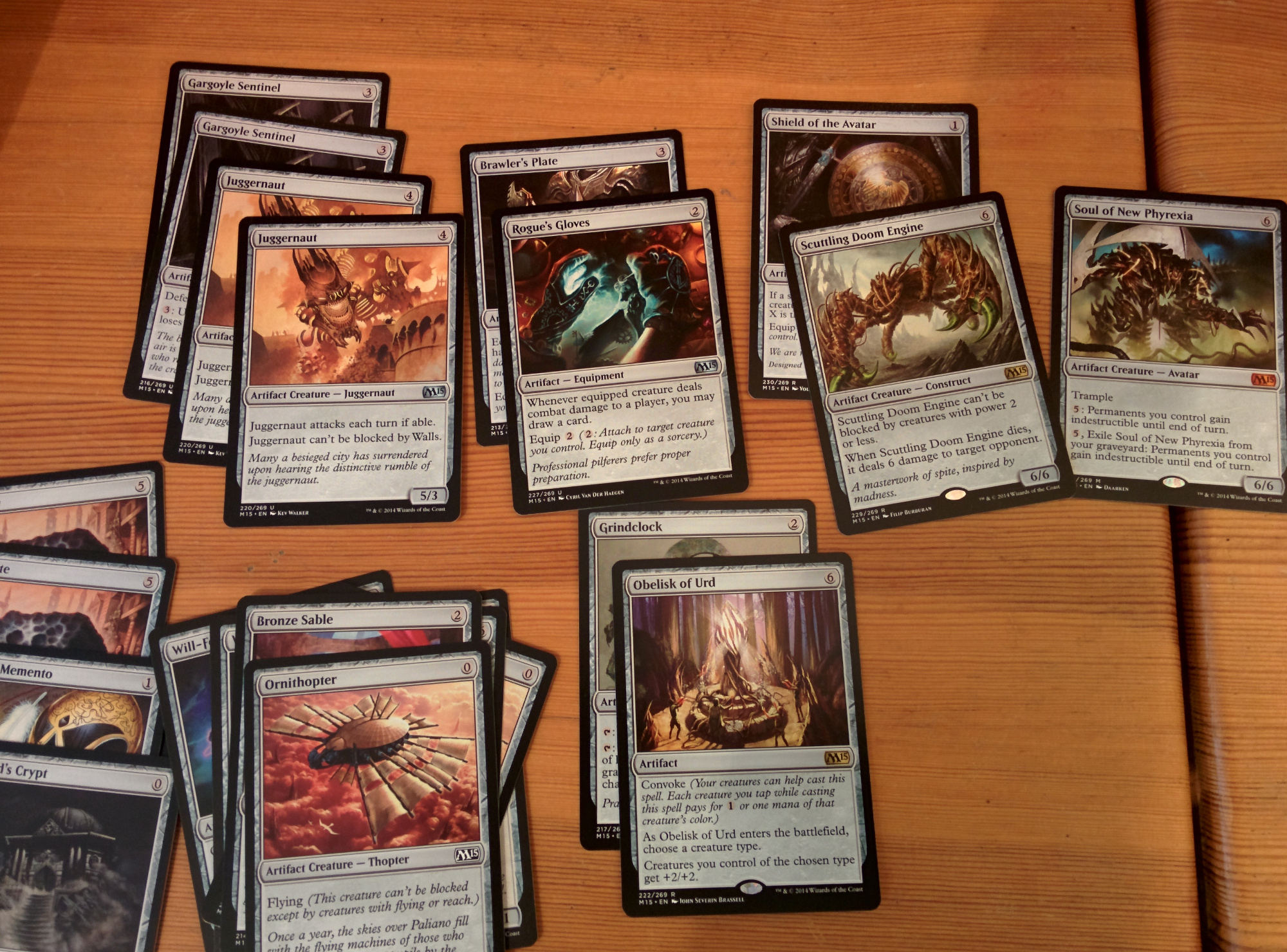Tools / Mediating Artifacts

The most obviously recognizable tools involved in a Magic activity network are the cards themselves. While in a sense this relates to how the cards serve as vehicles for specific combinations of game mechanics, it also relates to the cards as physical objects, often with some financial component connected to a card’s rarity. This understanding of card as artifact may, in turn, then extend to the card sleeves that are commonly used to house and protect cards in play. The opaque back side of a sleeve can, in many instances, reflect a player’s interests, deck themes (e.g., a Red Burn deck having red sleeves), or some social statement.
Other tools include a given play space, such as a player’s kitchen table surface and surroundings, or a seat at a local game store or convention. These all serve to mediate the activity in important ways, from creating a sense of comfort (or lack thereof) to providing competing sensory stimuli to constraining certain behaviors, (e.g., placing a drink on the same surface as one’s cards or play mat).
Copies (both physical copies and iterative versions) of the rules serve as mediators as well; players can share their knowledge and compare rules interpretations when moments of tension occur. The rules then serve as a nonhuman actor to impress, through their weight of authority and clarity of language (or lack thereof), particular kinds of decisions onto the players for continued gameplay. More frequently in organized play settings (i.e., play as part of an official Magic event) is the use of judges, arbiters whose knowledge of the game is consulted to resolve moments of dispute or confusion regarding mechanics or play behaviors.
Another important component of tool mediation is the range of venues for player communication, from in-person spaces at stores or tournaments to social media (from Twitter hashtag use to forums). In these spaces, players can discuss strategies, dissect rule decisions, contribute to fan expansions of game lore, and otherwise build a sense of community and relevant identities.